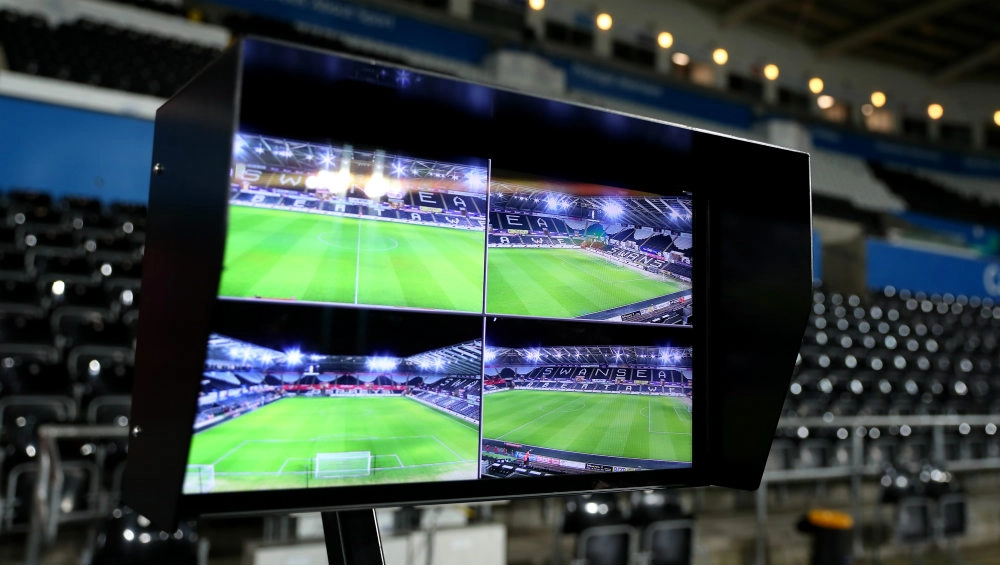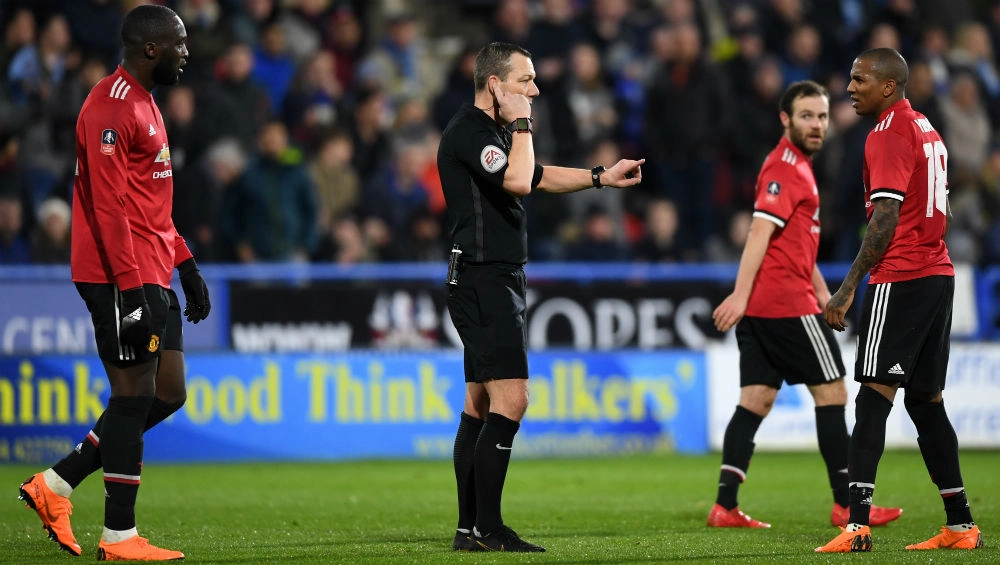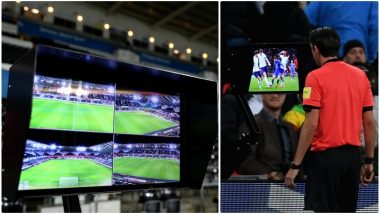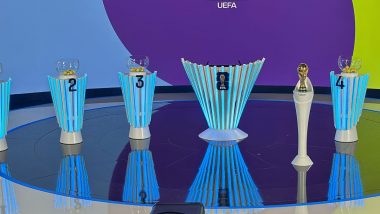Mumbai, June 5: The FIFA World Cup 2018 is around the corner and the introduction of Video Assistant Referee (VAR) in the game of play is only going to make it an interesting affair! The International Football Association Board (IFAB) had inducted the rules and guidelines of the use of VARs in the game at its 2016 Annual General Meeting.
IFAB, the body regulates and determines the laws and the rules of the game had given its approval two years back. The VARs have been used at different points of time in the last couple of years. The trials were first done in United Soccer League, in the United States. Also, the use of VAR also took place in the 2017 FIFA Under-20 World Cup.
So, what is a Video Assistant Referee (VAR)?
The VAR is a team of individuals which will help the match officials during the course of play in all the FIFA World Cup 2018 matches. The VAR will not be making any decision by itself, but will only assist the match referee in the decision-making process, when the game is on.

The team of VAR will be located in Moscow with an access to all the broadcast cameras in a Video Operation Room (VOR). Also, the VAR will have access to the two dedicated offside cameras.
When can the referee call for the VAR?
As per the rules set by the IFAB, there are four types of calls that can be reviewed by the referees. The decisions pertaining (only) to:
a. Goals
b. Penalty
c. Red cards
d. Mistaken identity
On what instances can the referee call for the VAR?
The referee can take the help of the VAR only when there is a ‘clear and obvious error’ in his decision making. The VAR, who will be in constant touch with the referee, can also suggest about the wrong decision to the referee while the ball is in play.
What is the process of VAR?
There will be a team, consisting of VARs and Assistant Video Assistant Referees – AVARs, monitoring the proceedings of the match. The monitoring of all the matches will be done in a VOR, with the Replay Operator (RO) providing the needed assistance.
The referee can call for a review of a decision if he feels there is a ‘clear and obvious’ need of it. Also, the VARs and AVARs, who will be keeping a tab on the live action and remain in constant touch of the official match referee can contact him about the erroneous decision.

After the referee communicates his doubt of error to the VAR, the VAR team will revisit and monitor about the same. If they find that there has not been a clear mistake in the decision making, the referee will be communicated about it and the match will not be halted – this would mean conducting a ‘silent check’.
However, if the VAR team finds an ‘obvious and clear’ in the decision making, then the referee would have some choice at his disposal, which are:
a. Change the decision as advised by the VAR.
b. Undertake an On-field Review (OFR) of the erroneous decision by himself by examining the video at the designated area on the sidelines, which is called as Referee Review Area (RRA).
c. Decides to stand by his original decision and not feels a need of it to review it.

The referee cannot halt or pause the match when either of the teams is in a (potentially good) attacking possibility. He can only pause the proceedings when the ball is in neutral zone.
How would a referee call for a VAR? What signs does the referee have to make to call for a VAR?
The referee, if at all feels, that there arises a need for a VAR, he will have to raise his hands and form a rectangle shape with his index fingers. It would be much like the sign the umpires use to call for a third umpire review in the game of Cricket.
What technology did the FIFA introduce during FIFA World 2014?
During the previous World Cup 2014, the FIFA had introduced the usage of Goal-line technology. It was much appreciated by the fans and match officials across the spectrum. This time, will the introduction of Video Assistant Referees help the cause of referees, who sometimes under immense pressure, take erroneous decisions, which are potentially game-changing result-altering at most of the times.

The usage of VARs and its success and failure will much depend on how the technology is used in 2018 FIFA World Cup. The first match of the World Cup 2018 in Russia will see the host team take on Saudi Arabia on June 14. Stay tuned with LatestLY for all the latest updates about Video Assistant Referees (VARs) and FIFA World Cup 2018.
(The above story first appeared on LatestLY on Jun 05, 2018 06:28 PM IST. For more news and updates on politics, world, sports, entertainment and lifestyle, log on to our website latestly.com).













 Quickly
Quickly




















